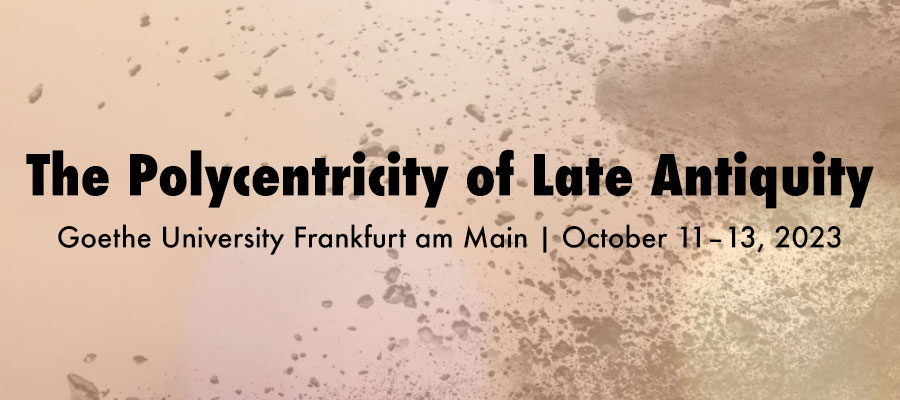The Polycentricity of Late Antiquity, Goethe University Frankfurt am Main, October 11–13, 2023
In Late Antiquity, Constantinople developed into the undisputed capital of the Eastern Roman Empire, gaining ever more central functions for what remained of the Roman Empire (Pfeilschifter 2013). At the same time, numerous decentralising tendencies can be observed. Many Romans were aware that the Roman Empire was at best only one eye of the world, and the Persian Empire the second (Canepa 2009). Moreover, new centres formed in areas of the West that were beyond imperial control (Meier 2021), sometimes centres of a local Romanitas (Brown 2012), as shown, for example, by the flowering of courtly Latin poetry in the Vandal Empire.
In addition to the politically defined centres, a network of ecclesiastical centres, the so-called patriarchates, existed in the Roman Mediterraneum and had established themselves by the 5th century. Among them, the patriarchates of Alexandria, Antioch and Rome were considered centres of Christianity early on. In addition, Constantinople gained in ecclesiastical political importance from the 4th century onward, but Rome always remained the most important ecclesiastical centre, even in times of greatest political weakness (Kötter 2013). The rivalry between the provincial capital Caesarea and Jerusalem, which was outstanding from a religious point of view, is another example of the negotiation of the relationship between different centre functions. With pilgrimage and the appearance of highly respected saints, such as the two Stylites named Symeon, new centres emerged for a time (Parker 2022). In addition, heretical groups such as the Church of the East formed centres of their own. The Caucasus was on the one hand dependent on the great empires and on the other hand oriented to its own centres (Dorfmann-Lazarev 2022). For all Mediterranean Jews, Babylon was a centre located in the Sasanid Empire.
The network of intellectual centres was structured differently still. Here, the college of Constantinople played an important role, but Beirut also formed a centre of legal education that made a man like Libanios fear that Antioch would lose its importance (Van Hoof 2014). Undeniably, Athens and Alexandria remained centres of philosophy. While Athens was little more than an educational centre, Alexandria was also an ecclesiastical centre and possessed great political and administrative importance. Individuals such as Jacob of Sarug (Forness 2018) or Augustine could be considered centres because they acted as a hub for correspondence (Preuß 2022). With Arab expansion, entirely new centres emerged (Berger 2016). With regard to Nubia and Ethiopia, Alexandria possessed the centre function that pointed beyond the borders of the Roman Empire. It had this in common with Jerusalem, for example, but also with Edessa, a centre of Syrophonous Christians, which from the Roman perspective was a place on the periphery (approaches in Leppin 2021). This also shows the importance of multilingualism for the polycentricity of the Roman Empire. The multitude of places that could be considered centres, the variety of centre functions, the transboundary character of some centres all illustrate how complex the topic is. The conference aims to advance discussion on these issues and to bring relevant researchers into closer contact.
The call is based on a broad understanding of Late Antiquity (4th-7th centuries). Contributions on individual centres or on their comparison are invited, but also theoretically inspired reflections on the formation of centres and on practices on the basis of which centres could be recognised. The call for papers is open to advanced doctoral and post-doctoral students in history, classical philology, archaeology, theology, Jewish studies, Syrology, Coptic studies, Caucasian studies, Iranian studies, Islamic Studies and related fields. The conference language will be English.
This is the final conference of the Leibniz Prize Project “The Polyphony of Late Antique Christianity”.
